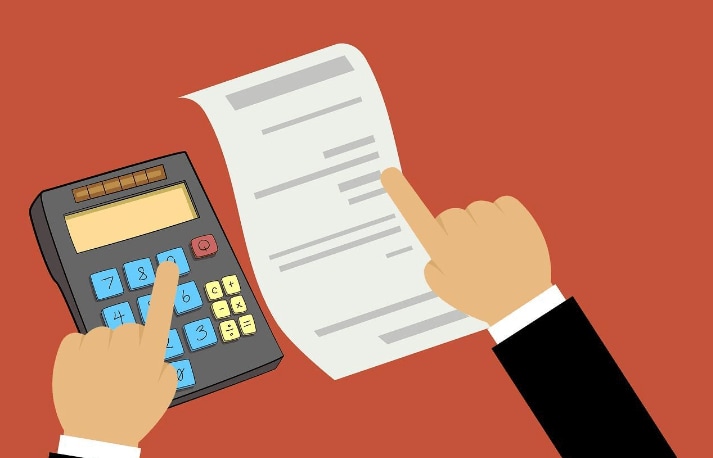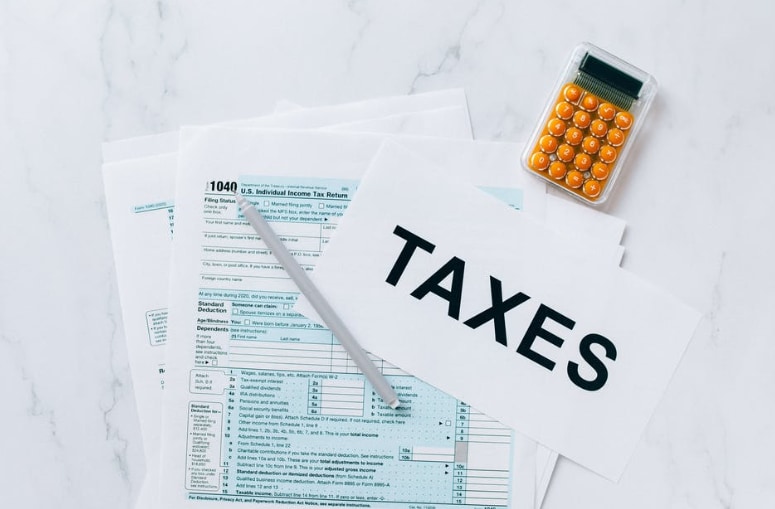Learning how to become a tax preparer can open the door to one of the most in-demand career paths today. Opportunities are plentiful, and there’s no shortage of resources to build your knowledge and advance your skills. Plus, there are ongoing seasonal opportunities to grab extra work if you want or need it. But how do you know if it’s right for you? Keep reading to learn more about what it takes to become a tax preparer and how to get started on this exciting career path.
Key Points
- Tax preparers guide clients through complex, ever-changing tax laws by filing returns and advising on maximizing deductions and credits.
- Basic requirements for becoming a tax preparer include obtaining a preparer tax identification number (PTIN), completing tax-prep training, and securing access to professional software.
- Credentials like enrolled agent (EA) or certified public accountant (CPA) provide unlimited IRS representation rights and boost credibility.
- Some states, including California, Maryland, and Oregon, require additional licensing or certification for tax preparers.
- Ongoing training and connecting with professional communities support long-term success in tax preparation.
1. Understand the Role of a Tax Preparer
Not everyone understands just how complex tax laws can be, or that they change yearly before each tax season. Becoming a tax preparer can be rewarding because you help people navigate these challenges and make their lives a little less stressful.
As a tax preparer, you’ll advise clients, use tax software to review their financial situations, and help them file their returns. That makes keeping up with tax laws as they evolve an essential part of the role. Tax preparation can be a very lucrative career, but the income does fluctuate. Tax season is when you’ll see the most activity, so working a lot during that time can earn you the big bucks. That said, some preparers build year-round practices by adding services like bookkeeping or business tax consulting.
2. Meet Basic Requirements
Becoming a tax preparer is a straightforward process that follows a few common steps:
- Have at least a high school diploma or GED.
- Take a course to receive your tax preparation certification. This course involves learning the ins and outs of preparing taxes and tax laws.
- Obtain access to tax preparation software. You may do so through a company or by purchasing the software yourself.
- Obtain a PTIN from the IRS. This allows you to legally prepare and file returns for others but does not grant authority to offer CPA- or attorney-level services, such as representing clients before the IRS.
- Find clients. Typically, new tax preparers stick with simple individual returns, or 1040s, for the first year or so. Once you gain the necessary experience, you can move on to more complicated tax returns.
State requirements vary, and some may require additional licensing or registration. Full representation rights require becoming an enrolled agent, CPA, or tax attorney.
3. Decide Whether to Pursue Additional Credentials
You also may choose to become an enrolled agent. EAs pass a rigorous exam and are licensed by the IRS with the highest tax credential. They’re recognized as tax experts and must meet continuing education standards. This credential can significantly boost your professional credibility.
Another option is to become a CPA. CPAs must pass the comprehensive Uniform CPA Exam and meet stringent education and experience requirements set by their state’s board of accountancy. While CPAs often focus broadly on financial accounting and consulting services, they are also qualified to handle complex tax preparation and planning tasks.
Both EAs and CPAs have unlimited representation rights before the IRS. This means they can represent clients at all administrative levels—including audits, collections, and appeals—providing valuable support when clients face complicated tax issues.

4. Complete Any Required State-Level Registrations
In addition to the federal Preparer Tax Identification Number (PTIN), several states mandate that tax preparers obtain specific credentials or complete a state-level registration. It is your professional responsibility to research and comply with all applicable state requirements before providing tax preparation services. States with such requirements currently include:
In addition to the specific credentials listed above, each state has its own unique set of requirements for individuals looking to become tax preparers. Navigate the process with our guides:
Obtain an Electronic Filing Identification Number (EFIN)
Preparers who file more than 11 returns a year must e-file every return they complete unless they have filed a waiver that has been approved by the IRS. To e-file, you must apply for an electronic filing identification number (EFIN) and pass a suitability check with the IRS. The EFIN is used to submit each prepared tax return through the e-file system. You must be an authorized e-file provider and have an EFIN to submit electronic returns. An EFIN does not expire. If you start a company or if your business’s employer identification number has changed, you would need to apply for a new EFIN. Only one EFIN is required per tax preparation location. It’s not required for every tax preparer.
5. Get the Right Training
To succeed as a tax preparer, you need a solid understanding of tax laws and procedures. The IRS recommends completing training through an accredited program to learn how to prepare accurate returns and stay compliant.
Tax preparation courses—available online or in person—cover essentials like completing individual tax returns, maximizing credits and deductions, and handling more complex situations such as self-employment, rental income, or investments. For those just starting out, Intuit Academy offers free courses that cover tax fundamentals and more advanced topics.
Once you’ve completed initial training, continuing education is key. Programs like the IRS Annual Filing Season Program (AFSP) and the Enrolled Agent (EA) credential require annual coursework to keep up with tax law updates. This ongoing learning helps you maintain your qualifications and stay competitive in the field.
6. Apply for Tax Preparer Jobs
Once you’re trained and ready, start applying for tax preparer opportunities that align with your skills and availability. Begin by creating a professional resume highlighting your training, certifications, and any relevant experience—even volunteer work, such as assisting with community tax clinics. Many employers also value online certificates from training programs, so be sure to include them.
You can find openings on major job boards, through professional associations, or by networking locally and online. Some tax professionals start with seasonal roles during tax season to gain experience and build client relationships, then transition into year-round positions.
When applying, consider whether you’d prefer an onsite role at a local office, the flexibility of remote work, or even a hybrid arrangement that combines both. Larger companies, such as Intuit, often offer a mix of these options—along with benefits like continuing education programs, EA credential reimbursement, and flexible scheduling. Applying early, especially before peak tax season, can increase your chances of landing the role you want.

Tips for Succeeding as a Tax Preparer
If you’re interested in becoming a tax expert, there are many resources available both online and offline that can help you learn about the process and requirements for becoming a tax preparer. Here are some tips to consider:
- Stay current on tax laws. Tax laws are always changing, so be sure to take continuing education credits and read industry publications and articles to stay current.
- Use tax software tools. Part of learning how to become a tax preparer is seeking tools that make you more efficient. Your clients deserve the best from you, and tax software platforms like TurboTax and ProSeries make it easy for you to submit timely, accurate returns for your clients.
- Join professional communities. The IRS website offers online forums and resources for new tax preparers to learn as they start their careers. Events like Intuit Connect are also great for accountability, sharing insights, learning about the latest technology and laws, and more. Whether you’re working remotely or in a local office. Join online forums and professional groups, and attend local events or meetups to connect with other tax professionals in your area. This can open doors to job opportunities and partnerships.
Additionally, the IRS recommends first looking into your state’s licensing requirements. Each state has different licensing requirements for tax preparers, so it is important to check with your local government before making any decisions.
Ready to Take the Next Step to Becoming a Tax Preparer?
Now that you understand how to become a tax preparer, you are ready to start your new path. Here’s a quick recap of the steps in this guide:
- Understand the role of a tax preparer
- Meet basic requirements
- Decide whether to pursue additional credentials
- Complete any required state-level registrations
- Get the right training
- Apply for tax preparer jobs
The path to becoming a tax preparer is clear, and the demand for experts is high. We’ve covered the essential steps you’ll need to take, from getting your PTIN to finding the right training.
Take the next step today and explore a career with Intuit. We’re hiring for various tax preparer positions, with both remote and local roles available. Find the perfect role for you and apply directly.
FAQs About Becoming a Tax Preparer
What is the difference between getting a PTIN and enrolling in the AFSP?
A preparer tax identification number (PTIN) is a mandatory IRS ID number all paid tax preparers must have. The Annual Filing Season Program (AFSP) is optional and provides additional education and certification. AFSP credential holders receive limited IRS representation rights, enhancing their credibility and allowing them to represent clients during audits or inquiries.
Does not being a CPA limit the types of tax clients you can work on?
No, you don’t need to be a CPA to prepare taxes for individuals, small businesses, or other entities. However, CPAs can represent clients fully before the IRS and handle more complex accounting tasks. Non-CPAs can expand their representation rights and work with complex tax situations by earning the enrolled agent (EA) credential.
Do rules for becoming a tax preparer differ by state? What about by country?
Yes, requirements vary significantly by state, with some states like California, Oregon, and New York requiring additional registrations or licenses. Rules also differ widely by country, with separate licensing processes, qualifications, and regulations. For example, becoming a certified tax preparer in Canada has its own certification path, training, and steps.
How long does it take to become a tax preparer?
Technically, it only takes as long as it takes the IRS to process your PTIN and EFIN applications and send you the numbers. However, becoming a seasoned tax preparer with clients is a longer process.
Most tax preparers spend the first two years of tax preparation learning how to do the job properly. Spending the first two years gaining the necessary experience to increase your tax preparation knowledge gives many preparers the skills to advance upward. The timeline may look different depending on your experience and current tax knowledge.